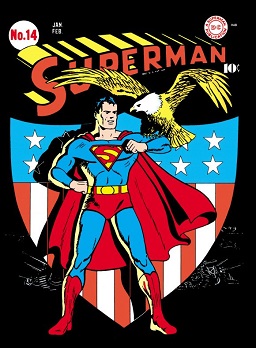
The Golden Age of Comic Books describes an era in the history of American comic books from 1938 to 1956. During this time, modern comic books were first published and rapidly increased in popularity. The superhero archetype was created and many well-known characters were introduced, including Superman, Batman, Robin, Captain Marvel, Captain America, and Wonder Woman.
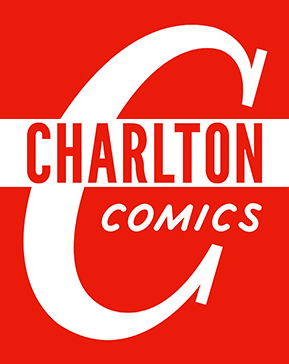
Charlton Comics was an American comic-book publishing company that existed from 1945 to 1986, having begun under a different name: T. W. O. Charles Company, in 1940. It was based in Derby, Connecticut. The comic-book line was a division of Charlton Publications, which published magazines, puzzle books, and briefly, books. It had its own distribution company.

An American comic book is a thin periodical originating in the United States, on average 32 pages, containing comics. While the form originated in 1933, American comic books first gained popularity after the 1938 publication of Action Comics, which included the debut of the superhero Superman. This was followed by a superhero boom that lasted until the end of World War II. After the war, while superheroes were marginalized, the comic book industry rapidly expanded and genres such as horror, crime, science fiction and romance became popular. The 1950s saw a gradual decline, due to a shift away from print media in the wake of television and the impact of the Comics Code Authority. The late 1950s and the 1960s saw a superhero revival and superheroes remained the dominant character archetype throughout the late 20th century into the 21st century.
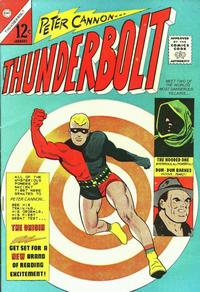
Peter Cannon, Thunderbolt is a fictional superhero character originally published by Charlton Comics.

Fawcett Comics, a division of Fawcett Publications, was one of several successful comic book publishers during the Golden Age of Comic Books in the 1940s. Its most popular character was Captain Marvel, the alter ego of radio reporter Billy Batson, who transformed into the hero whenever he said the magic word "Shazam!".

Donald L. Heck was an American comics artist best known for co-creating the Marvel Comics characters Iron Man, the Wasp, Black Widow, Hawkeye and Wonder Man and for his long run penciling the Marvel superhero-team series The Avengers during the 1960s Silver Age of comic books.
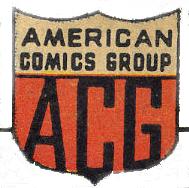
American Comics Group (ACG) was an American comic book publisher started in 1939 and existing under the ACG name from 1943 to 1967. It published the medium's first ongoing horror-comics title, Adventures into the Unknown. ACG's best-known character was the 1960s satirical-humor hero Herbie Popnecker, who starred for a time in Forbidden Worlds. Herbie would later get his own title and be turned into a "superhero" called the Fat Fury.

Atlas Comics was the 1950s comic-book publishing label that evolved into Marvel Comics. Magazine and paperback novel publisher Martin Goodman, whose business strategy involved having a multitude of corporate entities, used Atlas as the umbrella name for his comic-book division during this time. Atlas evolved out of Goodman's 1940s comic-book division, Timely Comics, and was located on the 14th floor of the Empire State Building. This company is distinct from the 1970s comic-book company, also founded by Goodman, that is known as Atlas/Seaboard Comics.
Peter A. Morisi, who sometimes went by the pseudonym PAM, was an American comic book writer and artist who also spent much of his professional life as a New York City Police Department officer. He is best known as creator of the 1960s Charlton Comics series Peter Cannon ... Thunderbolt, a thoughtful superhero comic that contained some of the earliest respectful invocations of Eastern mysticism in American pop culture.

Jungle Jim is the fictional hero of a series of jungle adventures in various media. The series began on January 7, 1934, as an American newspaper comic strip chronicling the adventures of Asia-based hunter Jim Bradley, who was nicknamed Jungle Jim. The character also trekked through radio, film, comic book and television adaptations. Notable was a series of films and television episodes in which Johnny Weissmuller portrayed the safari-suit wearing character, after hanging up his Tarzan loincloth. The strip concluded on August 8, 1954.
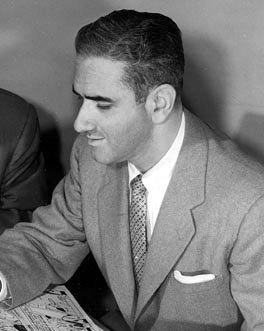
Bob Oksner was an American comics artist known for both adventure comic strips and for superhero and humor comic books, primarily at DC Comics.
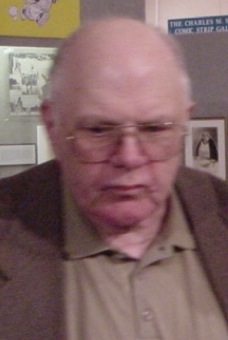
Don Perlin is an American comic book artist, writer, and editor. He is best known for Marvel Comics' Werewolf by Night, Moon Knight, The Defenders, and Ghost Rider. In the 1990s, he worked for Valiant Comics, both as artist and editor, where he co-created Bloodshot.

L. Miller & Son, Ltd. was a British publisher of magazines, comic books, pulp fiction and paperback books intended primarily to take advantage of the British ban on importing printed matter. Between 1943 and 1966, the firm published British editions of many American comic books, primarily those of Fawcett Comics and American paperback books, primarily those of Fawcett Publications' Gold Medal Books. The company is best known for the 1954 creation of Marvelman – a blatant imitation of the Golden Age Captain Marvel – after America's Fawcett Publications capitulated to National Periodicals. L. Miller & Son also published a large line of Western comics — many reprints but also some original titles - and both category fiction and non-fiction paperbacks.
Ace Magazines was a comic book and pulp-magazine publishing company headed by Aaron A. Wyn and his wife Rose Wyn. The Wyns had been publishing pulp fiction under the Periodical House and A. A. Wyn's Magazine Publishers names since 1928, and published comics between 1940 and the end of 1956.

Magazine Enterprises was an American comic book company lasting from 1943 to 1958, which published primarily Western, humor, crime, adventure, and children's comics, with virtually no superheroes. It was founded by Vin Sullivan, an editor at Columbia Comics and before that the editor at National Allied Publications, the future DC Comics.

Johnny Dynamite is a comic book private detective character created by writer Ken Fitch and artist Pete Morisi. Johnny Dynamite appeared in 1953's Dynamite #3-9 published by Comic Media and in Johnny Dynamite #10-12 published by Charlton Comics. He also appeared in Charlton's Foreign Intrigues #13-15.

John P. D'Agostino Sr., generally credited as Jon D'Agostino was an Italian-American comic-book artist best known for his Archie Comics work. As well, under the pseudonym Johnny Dee, he was the letterer for the lead story in the Marvel Comics landmark The Amazing Spider-Man No. 1, as well as other seminal Marvel comics.

Western comics is a comics genre usually depicting the American Old West frontier and typically set during the late nineteenth century. The term is generally associated with an American comic books genre published from the late 1940s through the 1950s. Western comics of the period typically featured dramatic scripts about cowboys, gunfighters, lawmen, bounty hunters, outlaws, and Native Americans. Accompanying artwork depicted a rural America populated with such iconic images as guns, cowboy hats, vests, horses, saloons, ranches, and deserts, contemporaneous with the setting.
Youthful was an American comic book publisher that operated from 1949 to 1954. The company was owned by attorney Bill Friedman and his wife Sophie. Adrian Lopez (1906–2004) had the title of publisher of the company for most of its existence. Comics editor Sol Cohen helped launch Youthful.















